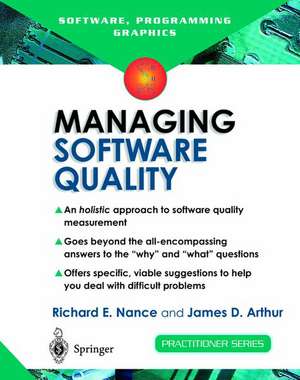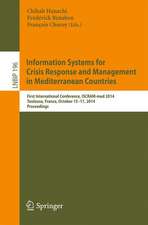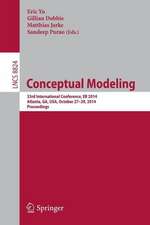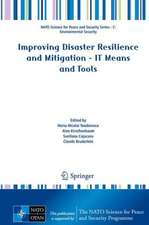Managing Software Quality: A Measurement Framework for Assessment and Prediction: Practitioner Series
Autor Richard E. Nance, James D. Arthuren Limba Engleză Paperback – 22 mar 2002
Din seria Practitioner Series
- 20%
 Preț: 337.52 lei
Preț: 337.52 lei - 20%
 Preț: 645.14 lei
Preț: 645.14 lei - 20%
 Preț: 333.54 lei
Preț: 333.54 lei - 20%
 Preț: 336.86 lei
Preț: 336.86 lei - 20%
 Preț: 332.24 lei
Preț: 332.24 lei - 20%
 Preț: 326.28 lei
Preț: 326.28 lei - 20%
 Preț: 344.76 lei
Preț: 344.76 lei - 20%
 Preț: 330.56 lei
Preț: 330.56 lei - 20%
 Preț: 333.04 lei
Preț: 333.04 lei - 20%
 Preț: 336.67 lei
Preț: 336.67 lei - 15%
 Preț: 646.94 lei
Preț: 646.94 lei - 20%
 Preț: 330.10 lei
Preț: 330.10 lei - 20%
 Preț: 332.24 lei
Preț: 332.24 lei - 20%
 Preț: 329.76 lei
Preț: 329.76 lei - 20%
 Preț: 327.77 lei
Preț: 327.77 lei - 20%
 Preț: 328.27 lei
Preț: 328.27 lei - 20%
 Preț: 341.95 lei
Preț: 341.95 lei - 20%
 Preț: 331.58 lei
Preț: 331.58 lei - 20%
 Preț: 326.13 lei
Preț: 326.13 lei - 15%
 Preț: 647.08 lei
Preț: 647.08 lei -
 Preț: 383.71 lei
Preț: 383.71 lei - 20%
 Preț: 355.14 lei
Preț: 355.14 lei
Preț: 328.42 lei
Preț vechi: 410.53 lei
-20% Nou
Puncte Express: 493
Preț estimativ în valută:
62.86€ • 68.31$ • 52.84£
62.86€ • 68.31$ • 52.84£
Carte tipărită la comandă
Livrare economică 21 aprilie-05 mai
Preluare comenzi: 021 569.72.76
Specificații
ISBN-13: 9781852333935
ISBN-10: 1852333936
Pagini: 136
Ilustrații: X, 126 p. 127 illus.
Dimensiuni: 191 x 235 x 9 mm
Greutate: 0.31 kg
Ediția:Softcover reprint of the original 1st ed. 2002
Editura: SPRINGER LONDON
Colecția Springer
Seria Practitioner Series
Locul publicării:London, United Kingdom
ISBN-10: 1852333936
Pagini: 136
Ilustrații: X, 126 p. 127 illus.
Dimensiuni: 191 x 235 x 9 mm
Greutate: 0.31 kg
Ediția:Softcover reprint of the original 1st ed. 2002
Editura: SPRINGER LONDON
Colecția Springer
Seria Practitioner Series
Locul publicării:London, United Kingdom
Public țintă
Professional/practitionerCuprins
1. Motivating Software Quality Meaurement.- 1.1 Software Measurement: Why, What, How and When.- 1.2 Frequent and Hidden Pitfalls.- 1.3 The Rationale of an Holistic Approach.- 1.4 Background Efforts Contributing to the Book Content.- 1.5 Purpose and Scope of the Book.- 2. Foundations for a Comprehensive Approach to Software Quality Assessment.- 2.1 Establishing a Quality Focus.- 2.2 The Objectives/Principles/Attributes (OPA) Framework.- 2.3 Software Quality Indicators.- 2.4 Influences of the Process Model.- 2.5 Establishing Measurement Goals: Assessment or Prediction.- 3. An OPA Measurement Program.- 3.1 Accommodating the Organizational Process Model.- 3.2 Measurement Program Responsibilities.- 3.3 Derivation of Software Quality Indicators.- 3.4 Interpretation of SQI Results.- 3.5 Decisions and Actions.- 4. Process Measurement.- 4.1 The Inherent Difficulty of Process Measurement.- 4.2 Indicator Derivation and Distinctions.- 4.3 Interpretation, Decisions and Actions.- 5. Product Measurement: Documentation.- 5.1 Motivation and Distinctions.- 5.2 The Characteristics of High Quality in Documentation.- 5.3 Measurement Approaches.- 5.4 Interpretation, Decisions and Actions.- 6. Product Measurement: Code.- 6.1 Indicator Distinction and Derivation.- 6.2 Attributes of Code Quality.- 6.3 Automated Collection of Code Indicators.- 6.4 Interpretation, Decisions and Actions.- 7. An Examination of Indicator Values and Their Aggregation.- 7.1 Using and Interpreting Indicator Values.- 7.2 Integrating Code, Documentation and Process Quality Indicators in a Software Quality Measurement Program.- 8. Prediction and Assessment: Differences in Goals.- 8.1 Effects of Process Models.- 8.2 Software Reuse.- 8.3 Sustaining Responsibilities and Quality Measurement.- 8.4 The Quality Database and Validity of Indicators.- 9. Software Quality: Views and Purviews.- 9.1 Software Quality: Holy Grail or Eternal Enigma?.- 9.2 What is “Quality”?.- 9.3 What about Software?.- 9.4 The Evolving Views of Software Quality.- 9.5 Software Quality: A Standard View.- References.
Recenzii
From the reviews:
"This is one of the few books in this area that addresses the 'quality' aspect based upon the important aspect of documentation. In addition, the book provides a basis for not only the software manager concerned with measurement implementation, but also the researcher in identifying the current state of the art and practice. This will be a key reference guide for anyone that is concerned with developing quality software." (William H Farr, PhD, Naval Surface Warfare Center Dahlgren Division)
"A thought provoking starter for a metrics professional with time to develop theory into practice. … good suggestions are made on typical things to measure. The code and test phases are well covered with extensive examples of metrics. The cost of the book is a small price to pay for the ideas it contains for a serious metrics practitioner, and it should provide some ideas for anyone involved in the measurement aspects of ISO 9001:2000." (Brian Peaker, British Computer Society, January, 2003)
"This is one of the few books in this area that addresses the 'quality' aspect based upon the important aspect of documentation. In addition, the book provides a basis for not only the software manager concerned with measurement implementation, but also the researcher in identifying the current state of the art and practice. This will be a key reference guide for anyone that is concerned with developing quality software." (William H Farr, PhD, Naval Surface Warfare Center Dahlgren Division)
"A thought provoking starter for a metrics professional with time to develop theory into practice. … good suggestions are made on typical things to measure. The code and test phases are well covered with extensive examples of metrics. The cost of the book is a small price to pay for the ideas it contains for a serious metrics practitioner, and it should provide some ideas for anyone involved in the measurement aspects of ISO 9001:2000." (Brian Peaker, British Computer Society, January, 2003)
Caracteristici
A measurement methodology based on the core precepts of Software Engineering Describes lessons learned during on-site research and application of software quality measurement Discusses how to reach the desirable end result, while most other models and assessment procedures for software quality tend only to concentrate on the end result An holistic approach to software quality measurement Goes beyond the all-encompassing answers to the "why" and "what" questions Offers specific, viable suggestions to help you deal with difficult problems Includes supplementary material: sn.pub/extras










